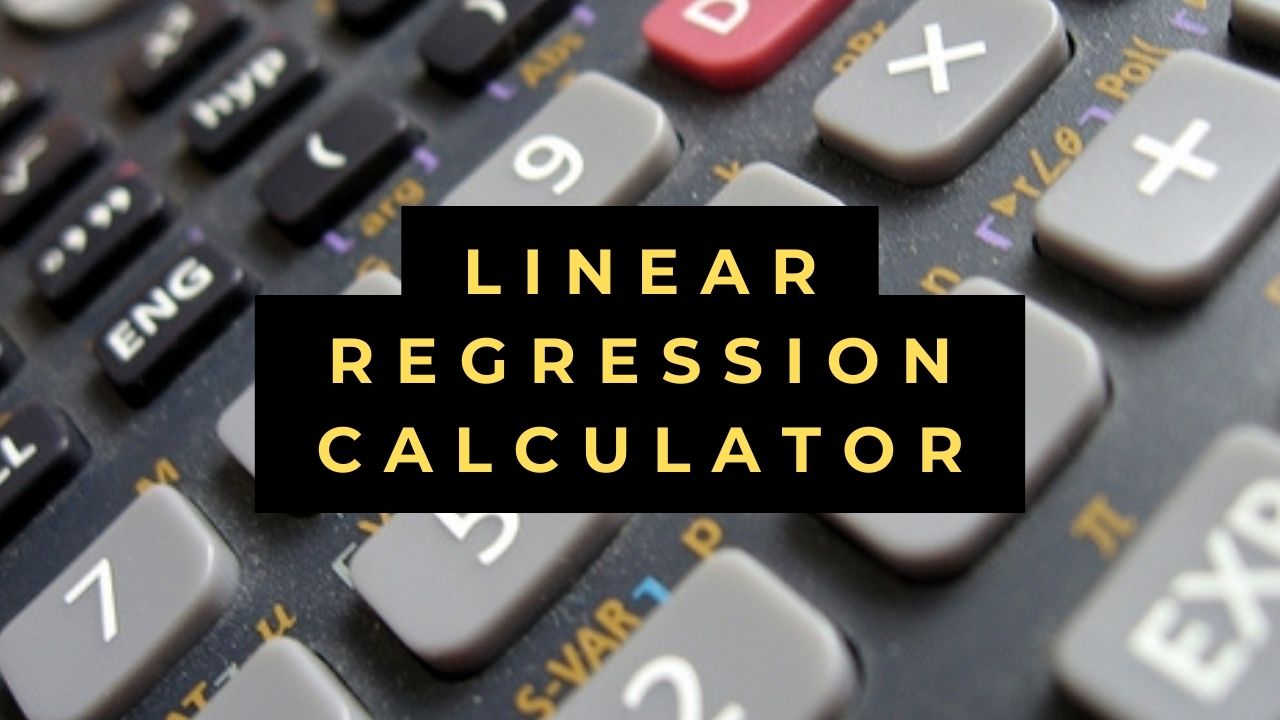Linear Regression Calculator
- Linear Inequalities Calculator
- Linear Equations In Two Variables Calculator
- Linear Correlation Coefficient Calculator
- Linear Approximation Calculator
Linear Regression Calculator with Steps
Effortlessly perform linear regression analysis with the Linear Regression Calculator. Learn how to calculate regression coefficients and predict values accurately. Simplify your data analysis today!
Linear Regression Calculator
Welcome to our comprehensive guide on linear regression analysis using the Linear Regression Calculator. Linear regression is a statistical method used to model the relationship between two variables by fitting a linear equation to observed data. In this article, we'll explore the concept of linear regression, its significance in data analysis, and demonstrate how to use our calculator to perform regression analysis effortlessly.
Understanding Linear Regression Calculator
Linear regression aims to find the best-fitting straight line that describes the relationship between the independent variable (predictor) and the dependent variable (outcome). The equation for a simple linear regression model is represented as y=mx+b, where y is the dependent variable, x is the independent variable, m is the slope of the line, and b is the y-intercept.
Importance of Linear Regression Analysis
Linear regression analysis is widely used in various fields, including economics, finance, psychology, and biology. It allows researchers and analysts to understand and quantify the relationship between variables, make predictions, and draw conclusions from empirical data.
How the Linear Regression Calculator Works
The Linear Regression Calculator simplifies the process of performing regression analysis by providing instant and accurate results. Simply input the dataset containing the predictor and outcome variables, and the calculator will compute the regression coefficients and other relevant statistics automatically. Our user-friendly interface makes it accessible to users of all statistical skill levels.
Step-by-Step Guide to Using Linear Regression Calculator
- Enter Data: Input the dataset containing the predictor and outcome variables into the designated fields.
- Select Analysis Type: Choose the type of regression analysis (simple or multiple) based on your dataset.
- Click Calculate: Initiate the calculation process by clicking the calculate button.
- View Results: Instantly receive the regression coefficients, model summary, and other relevant statistics.
Practical Applications
Linear regression analysis finds application in various real-world scenarios, including forecasting sales, predicting stock prices, and analyzing trends in data. Whether you're conducting market research, optimizing business processes, or studying population dynamics, understanding linear regression is essential for making data-driven decisions.
Advantages of Using the Linear Regression Calculator
- Efficiency: Saves time by automating the process of regression analysis.
- Accuracy: Provides precise results, minimizing the risk of errors in analysis.
- Insightful: Offers valuable insights into the relationship between variables and the predictive power of the model.
Common Errors to Avoid
When performing linear regression analysis, users should be mindful of common errors that can affect the validity of the results:
- Assumption Violations: Ensure that the underlying assumptions of linear regression, such as linearity and homoscedasticity, are met.
- Multicollinearity: Check for multicollinearity among predictor variables, as it can inflate standard errors and affect the interpretation of coefficients.
- Outlier Detection: Identify and address outliers in the data, as they can significantly influence the regression results.
Tips for Effective Analysis
To optimize the effectiveness of linear regression analysis, consider the following tips:
- Data Preparation: Clean and preprocess the data before performing regression analysis to ensure its quality and integrity.
- Model Evaluation: Assess the goodness-of-fit of the regression model using appropriate diagnostic measures, such as R-squared and residual analysis.
- Interpretation: Interpret the regression coefficients in the context of the problem domain to derive meaningful insights from the analysis.
FAQs
Q: Can the Linear Regression Calculator handle both simple and multiple regression analyses?
Yes, the calculator supports both simple and multiple regression analyses, depending on the dataset provided.
Q: Is linear regression suitable for all types of data?
Linear regression is most appropriate for data that exhibit a linear relationship between the predictor and outcome variables.
Q: What measures are used to assess the goodness-of-fit of a regression model?
Common measures include the coefficient of determination (R-squared), adjusted R-squared, and residual analysis.
Q: Can I use the Linear Regression Calculator for time series data analysis?
While linear regression can be applied to time series data, specialized techniques such as autoregressive integrated moving average (ARIMA) models are often more suitable for time-dependent data.
Q: Are there any limitations to the size of the dataset that can be analyzed using the Linear Regression Calculator?
The calculator can handle datasets of various sizes, but larger datasets may require additional computational resources.
Q: Does the Linear Regression Calculator provide information on statistical significance of regression coefficients?
Yes, the calculator provides p-values for regression coefficients to assess their statistical significance.
Conclusion
In conclusion, linear regression analysis is a powerful statistical tool for modeling and understanding the relationship between variables. The Linear Regression Calculator simplifies this process, offering efficiency, accuracy, and insightful results. By following the guidelines outlined in this article, you can confidently perform regression analysis and harness the predictive power of linear models in your data analysis endeavors.

